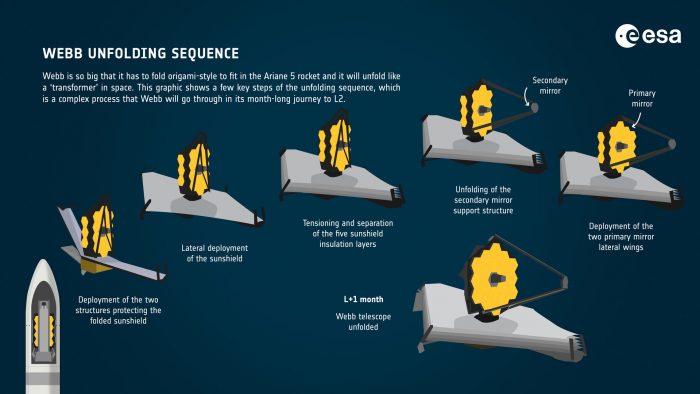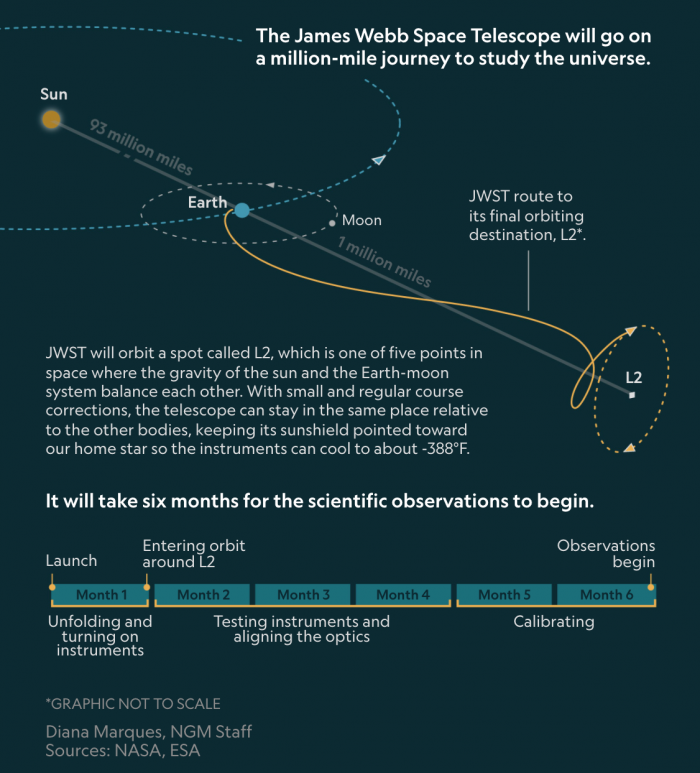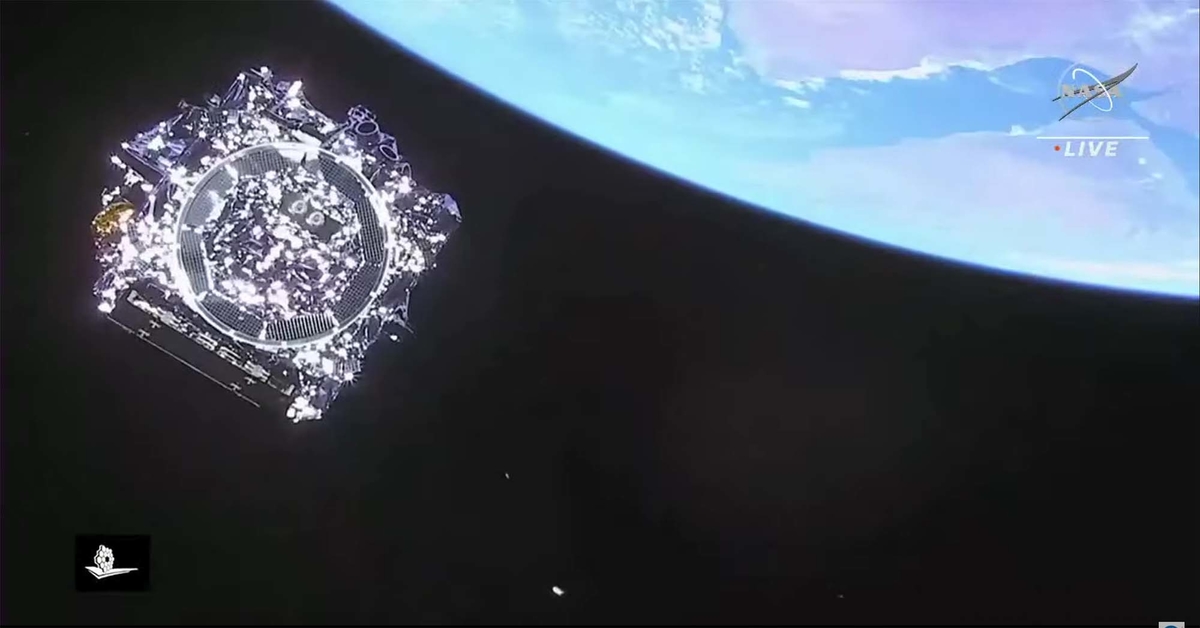On Christmas Day at 7:20 am ET, an Ariane 5 rocket, carrying the most ambitious space telescope in history, cleared the launchpad in French Guiana. Before the launch, mission control personnel at the Space Telescope Institute in Baltimore were already on a roller coaster of emotions. But as the rocket engines fired into action, thrusting the rocket into the clouds and sending it on a voyage back to the birth of the Universe, everyone roared in elation.
However, like all space missions, the suspense is far from over – a successful launch is still just the beginning of the final stretch for the James Webb Space Telescope (JWST). It’s called the “30 days of terror”.
The month-long journey, which will undoubtedly keep many scientists and engineers on the edge, sends JWST to the Lagrange point 2 (L2) – roughly 1.5 million kilometres (930,000 miles) from our planet. L2 is one of five sites in the solar system that would keep pace with Earth in their orbits around the sun. At this point, the gravitational balance between the Earth and the Sun stabilises the telescope – conserving its fuel – while also constantly placing JWST on the side of Earth directly opposite the sun, a position that reduces exposure to both light and heat. This shields the telescope’s instruments that are sensitive to infrared wavelengths and cools it down gradually across several months.
We’ve previously explored the scientific instruments hitching a ride on JWST here, while this article peers into what cosmological mysteries the JWST could potentially uncover.
But in this article, we’ll take a closer look at what happens during the “30 days of terror”. You might want to hold onto your seat for this!
Unfolding a golden eye in deep space.
Throughout its journey to L2, JWST will have to execute nearly 350 potentially fatal manoeuvres – or as NASA calls it: “single points of failure” – while prepping for its science missions.

What the first 30 days look like for the JWST. Photo credits: ESA
Here’s a brief rundown of the major events taking place during the journey to L2 (for more details, check out NASA’s Webb deployment page):
First week–
- First and second mid-course correction engine burns are conducted to ensure the telescope is pointed in the right direction towards L2.
- JWST’s high rate antenna positions itself directly towards Earth, which is used to transmit at least 28.6 gigabytes of science data from the telescope twice a day.
- JWST completes the deployment of its five-layered sunshield in a multi-step process.
Update: The rocket launch and first two mid-course corrections were so precise that NASA has confirmed that JWST should have enough fuel to last longer than the originally-intended 10-year science lifetime!
Second week–
- The secondary mirror positions itself to the front of the primary mirror – one of the most crucial moments of JWST’s deployment.
- Radiators that keep JWST’s sensitive infrared instruments cool deploy.
- The left and right wings of JWST’s primary mirror fold out and lock into place, and at this point, the telescope is in its final configuration.
Third week–
- As the primary mirror consists of 18 individual segments, ground personnel will spend the entire week meticulously aligning each segment with the help of six actuators that are attached to the back of each mirror piece. This helps the telescope to achieve a perfect focus for future science missions.
Fourth week–
- The final, and most vital course correction burn takes place, nudging JWST into orbit at the L2 point. Note: if this manoeuvre fails, JWST will sail onward into the deep abyss of space, possibly into oblivion.
- Once in orbit, JWST is finally fully deployed. But first, after weeks of hard work, JWST has to chill, quite literally. Telescope and scientific instruments continue their controlled cooldown to retain the required sensitivity pertaining to infrared measurements.

The remaining five months of commissioning will be all about aligning the optics and calibrating the scientific instruments. Primary mirror segments will be painstakingly aligned with nanometre precision, transforming the golden honeycomb into a giant light-collecting bucket that could capture photons from the earliest stars.
And in the summer of 2022, if all goes to plan, the patience of scientists will pay off, and they can finally start sciencing. With an eye sensitive enough to spot a bee on the Moon, JWST will peer into the primordial soup from which planets, stars and galaxies materialised, piercing the darkness that has occluded the gaze of other great observatories.
Just like every space mission, the magnificent JWST is brimming with the potential to discover something so profound and so unexpected that it will revolutionise how we think about our place in the universe.




































